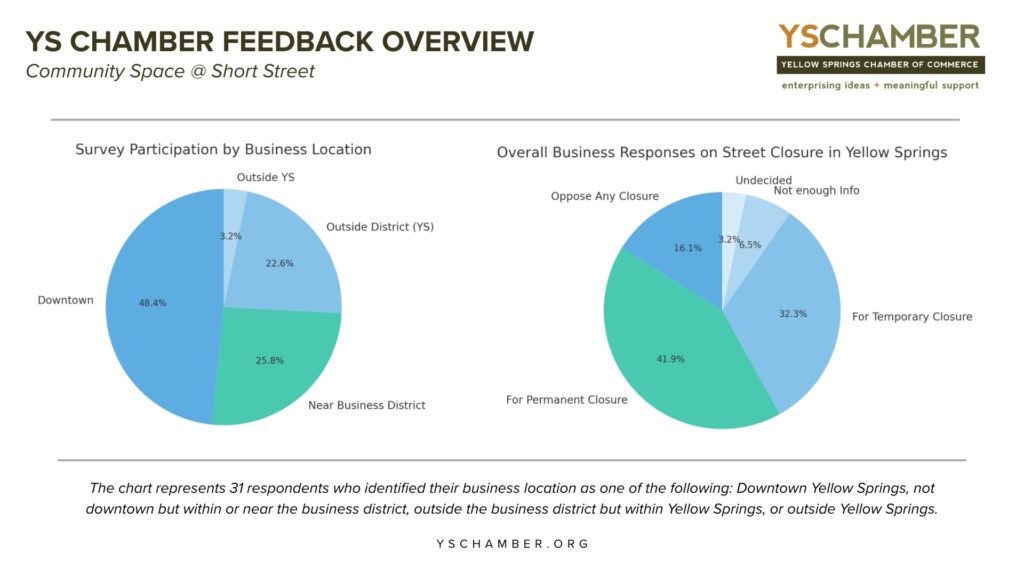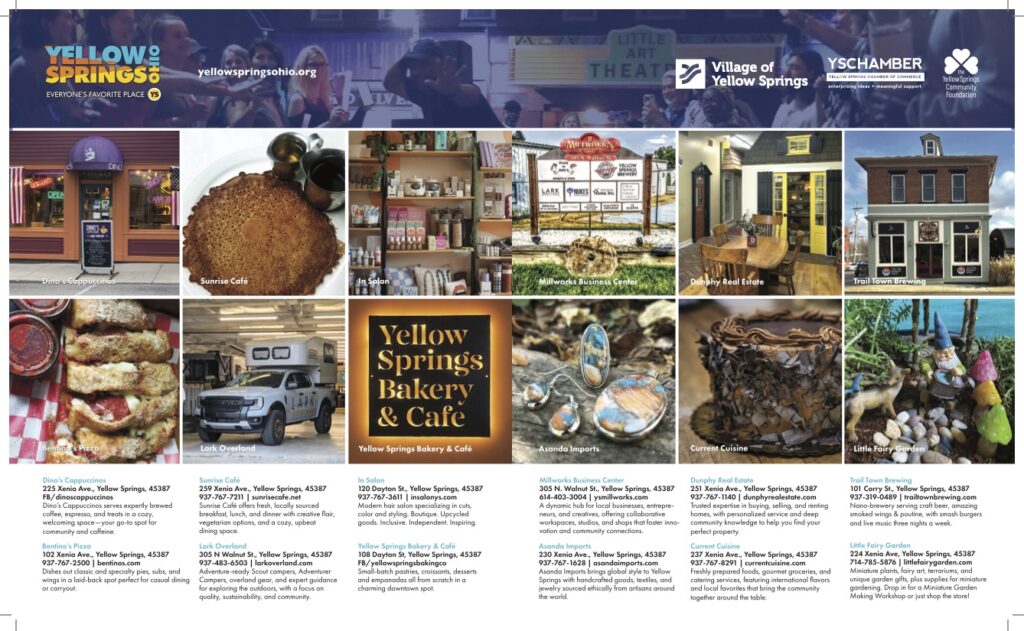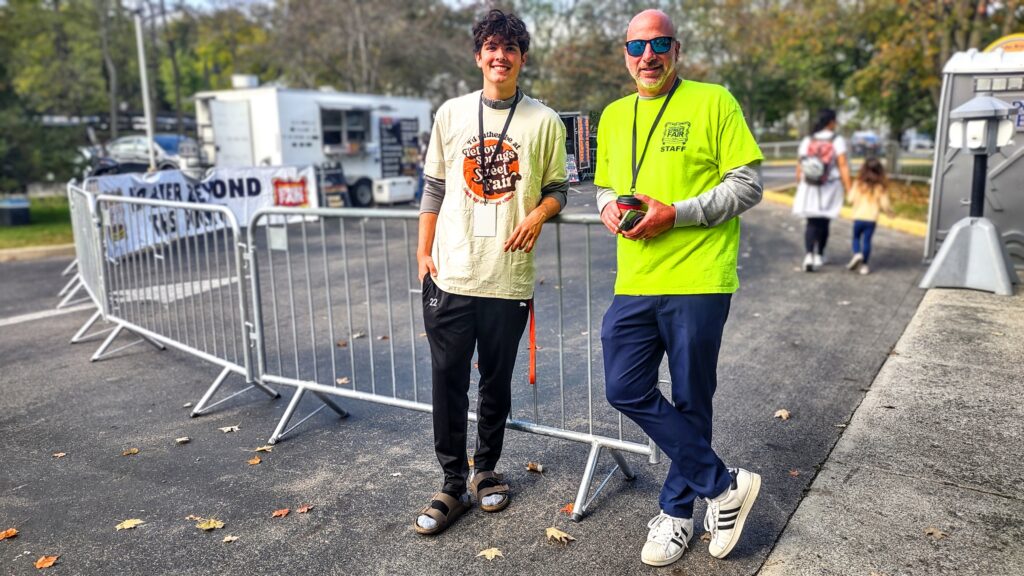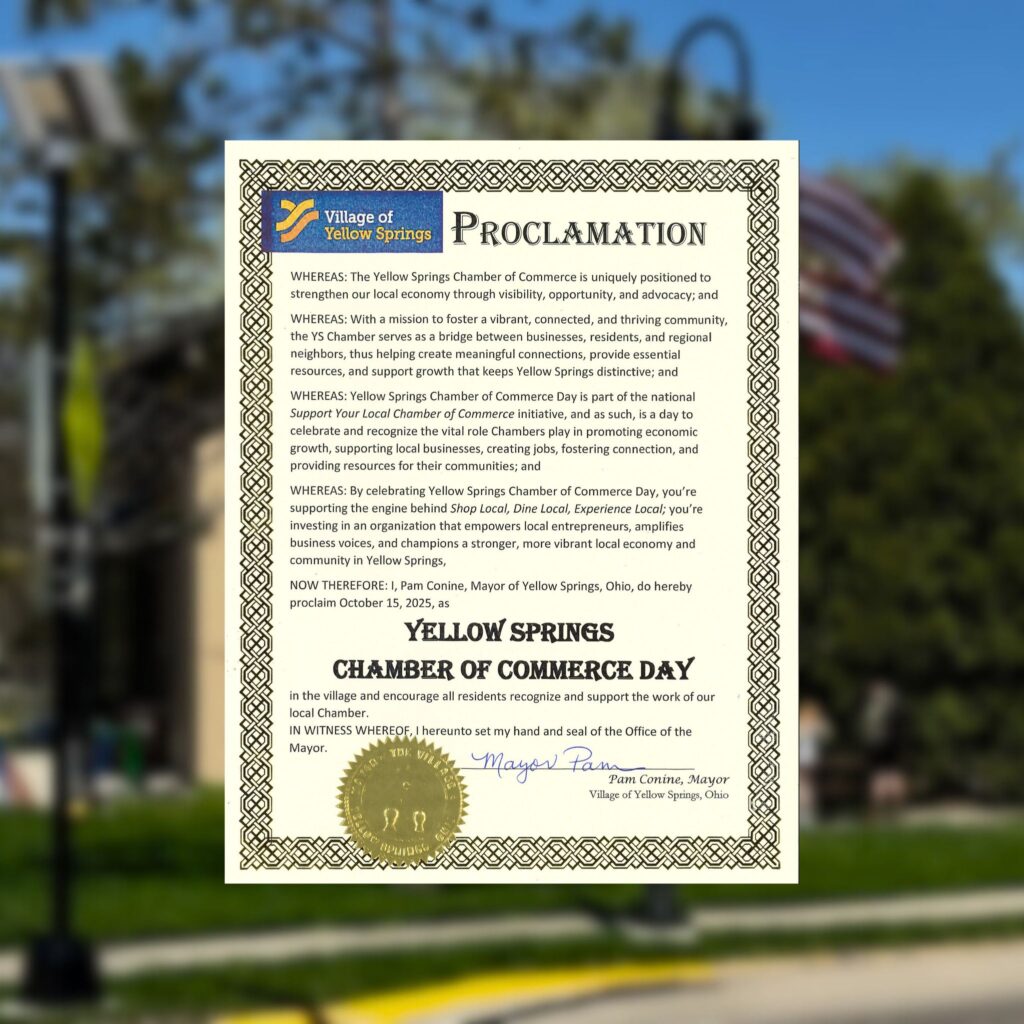The Voice of Businesses: The Balance of Short Street Feedback
Throughout the Short Street Community Space pilot project, downtown businesses, both Chamber members and non-members, have been consistently invited to participate, provide feedback, and contribute ideas regarding the installation and its potential long-term impact. Engagement opportunities have included virtual business hall meetings, the Keep It Vibrant campaign, formal channels through Village Council, and letters submitted directly to the Yellow Springs Chamber of Commerce. These multiple avenues ensured that business voices, regardless of location or affiliation, were welcomed and documented. Feedback has been ongoing from the start, through both in-person discussions and email correspondence.
While Short Street is located at the heart of the downtown business district, its influence extends across the entire Yellow Springs economy. From an economic development perspective, creating a community space in a central, high-visibility location can foster greater foot traffic, enhance visitor experience, and contribute to the long-term vitality of the local economy. To ensure all business perspectives were represented, a final feedback survey was distributed to all Chamber members, with a concentrated effort toward downtown businesses and non-member businesses that opted to receive Chamber communications.
Recent survey results on potential street closures in downtown Yellow Springs provide valuable insight but also highlight the need for broader participation from the downtown business community. Of the 31 out of 75 invited downtown participants (232 total business member invitees), most favored some form of closure, either permanent (13) or temporary (10), with only two opposing any type of closure. Downtown businesses were the most divided, with 10 of 15 supporting some form of closure, while those outside the core but within or near the business district showed the strongest support for permanent closure (6 of 8). Respondents outside Yellow Springs were generally opposed or uncertain. Overall, the data suggest that proximity to the central business area influences perspective, with those most embedded downtown showing a balanced mix of enthusiasm, caution, and requests for more information.

*Individual respondent stores and personal identities are not available to the public.
FEEDBACK QUESTIONS
I consider my business to be located…
- Downtown Yellow Springs.
- Not downtown, but within or close to the Yellow Springs business district.
- Outside of the business district but within Yellow Springs.
- Outside of Yellow Springs.
About the Community Space @ Short Street project…
- I am familiar with the project.
- I am unfamiliar with the project.
My perspective about the Community Space @ Short Street is that…
- I support closing Short Street and the installation of a permanent community space.
- I support temporarily closing Short Street during special events only.
- I oppose closing Short Street, whether permanently or temporarily.
- I need more information to make an informed decision.
- I need more information to make an informed decision.
- I am not familiar with the project.
I would like to schedule some time with Phillip O’Rourke to discuss my thoughts on this project.
- Yes
- No
While these results provide a directional sense of opinion, the survey’s low response rate limits its representativeness. Direct participation is required to capture a true picture of downtown sentiment. Too often, public statements imply that the opinions of a few outliers represent all downtown voices, which is not supported by the data.
However, based on common feedback, the uncertainty surrounding all facets of the project, both opposition and support, centers on clarity regarding the purpose of the space, its future aesthetics, participation opportunities, and overall management. With projects of this magnitude, envisioning what the future space will ultimately become requires a certain level of faith and trust and can be challenging, especially without a clear and shared understanding of its long-term goals, timeline, and design. By and large, the underlying sentiment in the responses remains, “I need more information to make an informed decision.”
As with any change in the downtown landscape, individual businesses have shared personal impacts, some of which continue as the pilot evolves. These experiences are valued, but it is important to differentiate personal operational impacts from collective economic outcomes. While effects such as parking, visibility, or access may feel pronounced for some, they do not necessarily represent shared or universal impacts across the business community, as demonstrated in the survey.
The Chamber continues to work closely with key business stakeholders to ensure concerns are accurately represented and addressed. Tom’s Market, for example, has raised pedestrian safety concerns regarding vehicles in the adjacent lot, and collaboration is underway to identify solutions that maintain safety for both customers and pedestrians. US Bank, located at the high-visibility corner of Short Street and Xenia Avenue, expressed early concerns about how community perception could influence corporate satisfaction metrics and future staffing considerations. Logistics, such as temporary street access for facility maintenance, remain an important consideration in ongoing planning.
From the outset, the Yellow Springs Chamber of Commerce, in alignment with its mission to cultivate economic vitality and advocate for a thriving, connected business community, has maintained clear principles guiding its support of the pilot. These principles have guided participation and remain central to all feedback and communications. As reiterated in the Chamber’s recent statement to Village Council:
The Chamber recognizes the importance of maintaining this area as a non-commerce-driven space, ensuring that its purpose remains rooted in community connection and cultural enrichment. With continued oversight from the Village, transparent planning, and a clear timeline for design, installation, and implementation, we are confident that this project will be a model of not only collaboration and community-centered development, but business enrichment and growth.
Phillip O'Rourke, Executive Director
An example of this collaboration includes programming adjustments made at the beginning of the pilot, when scheduling overlapped with a critical night for a local event space. The issue was addressed through clearer calendars and more specific programming, guiding scheduling moving forward and demonstrating a process of identifying challenges, evaluating impacts, and informing next steps.
Whatever decision is made regarding the future of this space, the path forward is clear: full engagement, thoughtful discussion, and shared responsibility. The Chamber is made up of active members and has established mechanisms, forums, committees, and regular communication channels that downtown businesses can utilize to share input and collaborate effectively.
The YS Chamber continues to respond to changing trends with adjusted strategies and to offer resources to businesses whose experiences fall outside collective patterns. As variables shift nationally, it is necessary to make adjustments based on the realities of total impact and to ensure that the business district and broader community are positioned for success, and this level of impact is best achieved together.






